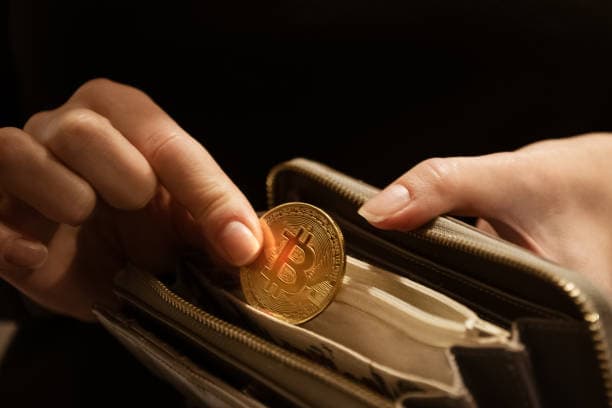What is a Backhanded Open? How to use Backhanded Open?
Backhand opening is an important technique in cryptocurrency trading, and many investors utilize this strategy to increase their returns during market volatility, or even to maintain a stable trading strategy in the face of price uncertainty. This article will provide an in-depth look at what a backhanded open is, how it can be used, and offer some practical tips to help you master this technique and improve your trading skills. Whether you are a novice or an experienced trader, understanding and utilizing backhanded open positions will add value to your cryptocurrency trading strategy.

What is a backhanded open?
Reverse opening refers to the situation in which you hold a trading position, according to market changes, quickly open a position in the opposite direction of the original position. Simply put, it means that you are long or short in the market first, and when the market reversal signal appears, in order to control the risk or seek more profits, immediately open a position in the opposite direction. This operation can effectively cope with the sharp market fluctuations, and allows you to maintain the flexibility to cope with different market environments.
For example, if you were long a cryptocurrency when its price was rising, but suddenly market conditions changed and the price fell. You can then reverse your position and go short, thereby minimizing your losses or even profiting from the downtrend. This strategy is often used in leveraged instruments such as futures and perpetual contracts, as these markets are more flexible and volatile.
Principle of Backhand Opening
The core principle of opening a position on the opposite side is "hedging". This is like opening a position in one direction, and when the market is not as expected, you hedge the risk by opening a reverse position, so that even if the original position suffers a loss, your reverse position can make up for part of the loss, or even realize a profit. The key to the success of this strategy lies in the judgment of the market trend and the timeliness of the operation.
For example, let's say you had a long trade in Bitcoin at a time when the price was rising, and the price increase gradually weakened, or even showed signs of a downward movement. At this point, you can make a quick judgment call and open a short position against your original long position. Even if the initial movement of the market is not as expected, such an action can minimize losses and even generate reverse profits when the price retraces.
It is important to note that opening a position on the opposite side of the market requires good market analysis and a sense of risk control.
How do I open a position using my backhand?
To be successful in using backhanded open positions, you must first have a good understanding of the market and be able to quickly analyze market trends. Here are some basic steps to follow:
Analyzing Market Trends: A backhanded position is usually used in markets with high short-term volatility. When there is a clear trend reversal signal, such as a price breakout above a support or resistance level, it is a good time to open a position on the opposite side of the market. Common technical indicators such as RSI (Relative Strength Index), MACD (Moving Average Convergence Divergence), etc. can help you analyze the market situation.

Choosing the right type of trade: Backhanding is usually used more frequently in highly volatile, leveraged markets, such as Bitcoin futures or perpetual contracts. These markets are highly volatile and offer more opportunities for backwardation.
Set up risk management measures: the operation of the backhand open position needs to be careful, because the market sometimes moves very quickly, may bring unexpected risks. In order to protect your capital, it is important to set up risk management tools such as stop-loss and take-profit. With these measures, you can automatically stop losses or lock in profits when prices fluctuate too much.
Immediate adjustment of the strategy: the market is changing rapidly, the operation of the backhand open position often need to be completed quickly in a short period of time. Therefore, it is important to remain sensitive to the market and adjust your strategy at any time in order to increase your success rate.
Risks and Precautions of Opening Backhanded Positions
While opening a position on the opposite side of the market can be a good way to minimize risk and increase returns, it is also a risky operation. Since a backhanded position involves a reversal, if the market does not reverse as you expect, you may incur a double loss. For example, if you go long when the price goes up, but go short when the market pulls back, you could lose money on both your long and short positions if the price goes up again.
Excessive use of leverage is one of the potential risks of opening a position on a backhanded basis. Although leverage trading can magnify returns, it can also magnify risks. Therefore, when opening a position, you must set a reasonable leverage multiplier according to your risk tolerance and strictly comply with the risk management rules.
Practical Examples of Backhand Opening
Suppose you open a long trade in a cryptocurrency (e.g. Bitcoin) after the price of the currency breaks out of a key area of a technical indicator and the market moves in line with your expectations. However, the price rebound is weaker and a short signal is issued, so you open a short position. If the price of Bitcoin then pulls back, your short position will likely realize a profit, while the loss on your long position is effectively contained.
This type of operation allows you to gain more profit margins in short-term market fluctuations and not to suffer excessive losses due to price reversals. Of course, this process depends on accurate judgment of market trends and the ability to react quickly.
Frequently Asked Questions Q&A
Q1: Are backhanded positions suitable for all cryptocurrencies?
A1: Backhand opening is more suitable for cryptocurrencies with high volatility and liquidity, such as Bitcoin, Ether and other mainstream currencies. For less volatile cryptocurrencies, the risk of opening a backhanded position is higher, so you need to be careful.
Q2: How big should I set my Stop Loss when I open a position using Backhand?
A2: The size of the Stop Loss should be adjusted according to the market volatility, and it can usually be set near the support or resistance level to avoid the Stop Loss being triggered by small market fluctuations. It is recommended that the stop loss range should not be too large to avoid excessive losses.
Q3: What is the best time to open a backhand position?
A3: The best time to open a position on the opposite side of the market is usually when there is a clear reversal signal after the price breaks above a key technical indicator. It is important to use technical analysis tools such as K-line patterns, RSI, MACD, etc. to determine market reversal signals.














